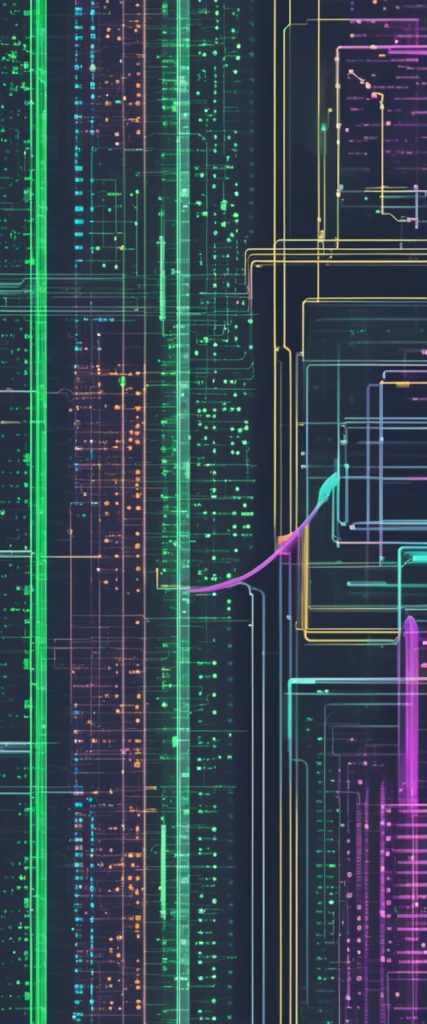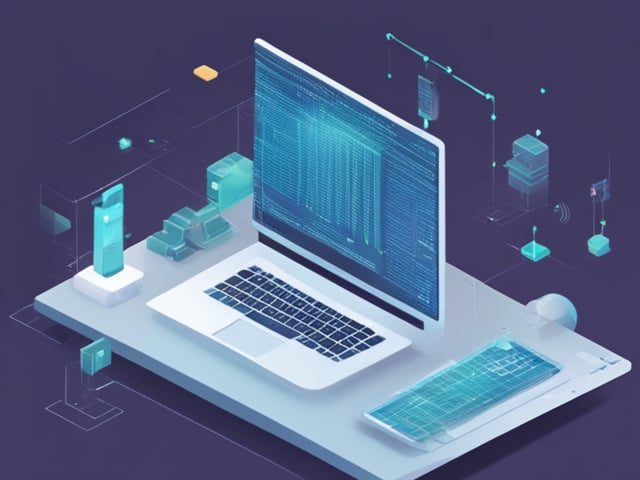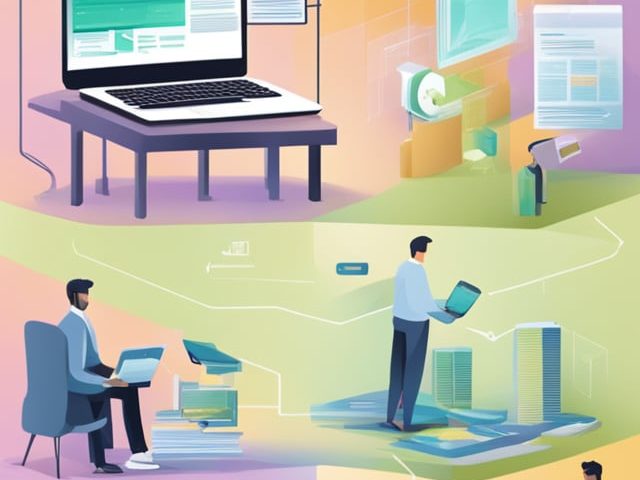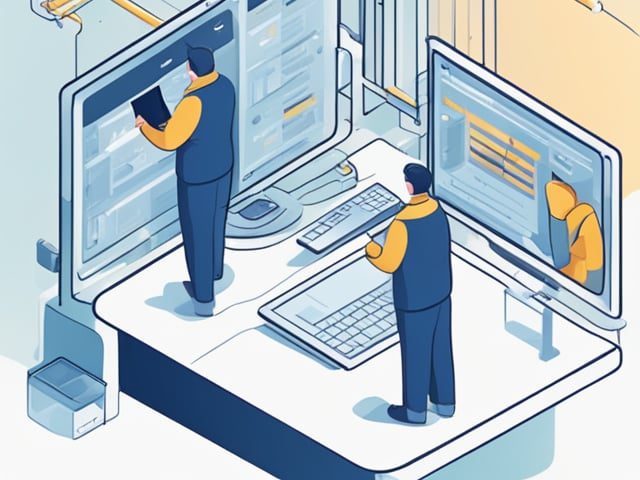The rise of artificial intelligence has transformed various industries, and web scraping is no exception. AI enhances web scraping by increasing efficiency, accuracy, and adaptability in data extraction processes. As businesses increasingly rely on data to drive their decisions, understanding how AI-powered techniques can optimize these scraping efforts becomes crucial for success.

Our exploration of AI in web scraping will cover various techniques and algorithms that enhance traditional methods. We’ll also delve into the challenges organizations face, from ethical concerns to technical limitations, and discuss innovative solutions that can overcome these hurdles. Real-world applications showcase how companies leverage AI to gather insights quickly and effectively, providing a practical lens through which we can view this technology.
By the end of the post, we’ll have a clearer understanding of not only the fundamentals of AI in web scraping but also its potential implications for the future of data collection and usage.
Key Takeaways
- AI significantly improves the efficiency and accuracy of web scraping tasks.
- Ethical and legal considerations are essential when implementing AI-based solutions.
- Real-world applications demonstrate the transformative potential of AI in data extraction.
Fundamentals of AI in Web Scraping

In the realm of technology, AI has become an essential tool for enhancing web scraping capabilities. This section explores the concepts of AI integrated with web scraping, the development of various technologies, and the pivotal role AI plays in data harvesting.
Understanding AI and Web Scraping
AI refers to algorithms and technologies that enable machines to perform tasks requiring human-like intelligence. In the context of web scraping, AI enhances traditional scraping methods by automating data extraction and improving accuracy.
Using techniques like Natural Language Processing (NLP) allows us to interpret and interact with text-based data effectively. Through machine learning models, our scraping tools can learn from patterns, adapt to changes on websites, and optimize the data retrieval process.
Evolution of Web Scraping Technologies
Web scraping has evolved significantly from simple HTML parsing to sophisticated AI-driven solutions. Initially, basic scripts would fetch data from static web pages. Now, we leverage advanced technologies to handle dynamic content and complex website structures.
Recent advancements include the integration of AI to navigate JavaScript-rendered sites and to bypass anti-scrape measures. Tools such as ScrapeGraph AI exemplify this evolution by automatically extracting structured data, making the process more efficient and user-friendly.
Role of AI in Data Harvesting
AI plays a crucial role in enhancing the efficiency of data harvesting. By applying machine learning algorithms, we can process vast amounts of data more effectively than ever before. This capability allows us to extract insights and trends that would be difficult to identify manually.
Moreover, AI algorithms enhance data quality by filtering out irrelevant information, ensuring we gather only the most pertinent data. Technologies such as computer vision aid in interpreting images and converting them into usable data formats as seen in various AI web scraping tools.
AI Techniques and Algorithms

In the realm of web scraping, artificial intelligence provides various effective techniques that optimize data extraction processes. Key methods include machine learning models, natural language processing, and pattern recognition technologies. Each plays a crucial role in enhancing the accuracy and efficiency of scraping tasks.
1. Machine Learning Models for Data Extraction
Machine learning models are essential for automating the data extraction process. These models can be trained to recognize patterns and identify relevant data points from unstructured web content.
Common algorithms involved include supervised learning models, such as decision trees and neural networks.
By training these models on labeled datasets, we improve their ability to accurately extract useful information from diverse websites. The adaptability of machine learning models allows them to continuously learn from new data, enhancing their performance over time.
2. Natural Language Processing for Web Content
Natural Language Processing (NLP) enables to interpret and process human language in the context of web content. By applying NLP techniques, we can extract meaningful insights from text-heavy web pages, such as articles, reviews, and social media posts.
Key NLP tasks include
(1) sentiment analysis
(2) entity recognition
(3) summarization
With these techniques, we can better understand the context and relevance of data, facilitating more nuanced data extraction.
Additionally, NLP helps clean and structure the data, making it easier for downstream analysis and decision making.
3. AI-Powered Pattern Recognition
AI-powered pattern recognition techniques take web scraping to the next level by identifying complex trends and anomalies within the data. These algorithms can detect visual patterns and changes in website layouts, which is particularly useful for dynamic sites.
For instance, image recognition algorithms can be applied to extract and interpret visual content.
This capability allows us to gather insights that go beyond simple text data, enriching our overall dataset. By leveraging these advanced techniques, we significantly enhance our ability to derive actionable insights from a wide array of online sources.
Challenges and Solutions

In the realm of AI usage in web scraping, we encounter several hurdles that require innovative solutions. Key issues include handling dynamic web content, coping with anti-scraping technologies, and ensuring data quality and relevance.
1. Handling Dynamic Web Content
Many modern websites utilize dynamic content that can change frequently due to user interaction or loading mechanisms. Traditional scrapers struggle with this fluidity, as they often rely on fixed HTML structures.
To effectively scrape such content, we employ advanced AI techniques, including machine learning models that can adapt to changes. By using tools like headless browsers or browser automation, we can simulate user behavior to extract data effectively.
Additionally, data extraction frameworks and scraping services must be flexible, allowing for real-time adaptations as the structure of the target website evolves. This agility is essential for maintaining scraping accuracy and efficiency.
2. Coping with Anti-Scraping Technologies
Websites increasingly implement anti-scraping measures to protect their data. Common techniques include CAPTCHA challenges, IP blocking, and the use of honeypots. These barriers can significantly hinder our ability to gather data.
To navigate these challenges, we adopt a multi-faceted approach. Rotating IP addresses (proxies) can help bypass geolocation restrictions, while employing CAPTCHA-solving services automates this process. Additionally, understanding the robots.txt file is crucial; it allows us to operate within the guidelines set by websites. Read more on anti-scraping techniques.
By combining these strategies with AI-driven methods, we enhance our ability to circumvent these security measures while remaining ethical and legal.
3. Data Quality and Relevance
Ensuring the quality and relevance of the scraped data is essential for our applications. Poor data can lead to incorrect analyses and misguided decisions.
To maintain high standards, we implement data validation protocols. This includes cross-referencing scraped data with reputable sources and employing machine learning models to assess data reliability.
We prioritize the use of structured data extraction, allowing us to filter and sort the information efficiently. Regular audits are also key, enabling us to refine our scraping techniques continually. By focusing on these aspects, we ensure that the data we gather is both accurate and actionable.
Ethical and Legal Considerations
When engaging in web scraping, we must navigate a complex landscape of ethical and legal guidelines. Understanding our responsibilities regarding copyright, privacy laws, and best practices is crucial for maintaining compliance and fostering positive relationships with data owners.
1. Respecting Copyright and Ownership
We need to be aware that the data we scrape may be protected by copyright laws. Websites often have terms of service (ToS) that outline how their content can be used.
Before scraping, we should review these terms to ensure we are not infringing on copyright. Additionally, attributing original content creators when using data can help maintain ethical standards.
It’s essential to remember that scraping images, text, or proprietary information without permission can lead to legal issues. When in doubt, seeking explicit permission or using data labeled for reuse, such as those under Creative Commons licenses, is a prudent approach.
2. Privacy Laws and User Consent
Navigating privacy laws is critical in web scraping. Regulations such as the General Data Protection Regulation (GDPR) in Europe impose strict guidelines on how personal data can be collected and used.
Before scraping, we should determine if the data includes personal information that requires user consent. Gathering consent can involve informing users about how their data will be used and giving them the option to opt-out.
Failure to comply with these regulations can result in hefty fines and damage to our reputation. Therefore, it is our responsibility to implement strong data-handling practices that respect user privacy.
Further reading on legal cases
Linkedin lost in court to data analytic company that scrapes Linkedin’s public profiles info
What is legal: scrape, or scrape & sell, or code a scraper
3. Best Practices for Responsible Scraping
Implementing best practices is vital for ethical web scraping. These include respecting a site’s robots.txt file, which specifies the permissions for automated access.
We should also avoid aggressive scraping tactics that could overload a website’s server. Setting reasonable rates of requests helps maintain server integrity and avoids disruptions.
Transparency in our scraping activities is essential. If approached about our practices, we should be ready to explain our methods and data usage clearly. By adhering to ethical standards and legal frameworks, we can engage in data collection responsibly while minimizing risks.
7 Ways to Protect Website from Scraping and How to Bypass this Protection
Advanced Applications and Case Studies

We explore the transformative impact of AI in web scraping, focusing on its advanced applications in business intelligence and educational research. These case studies illustrate how organizations are leveraging AI to enhance data collection and derive valuable insights.
Business Intelligence and Market Analysis
In the realm of business intelligence, AI-powered web scraping tools facilitate the collection of vast amounts of market data. These tools automate data extraction, allowing companies to gather insights on competitor pricing, product availability, and customer sentiment.
For instance, a retail company might utilize AI to scrape e-commerce websites for product reviews and ratings. By analyzing this data, they can identify trends and adjust their marketing strategies accordingly.
Key benefits include:
- Real-time data collection: Organizations can make informed decisions based on the latest market trends.
- Cost-effectiveness: Automating data scraping reduces labor costs associated with manual data gathering.
Through targeted, AI-enhanced scraping, businesses can gain a competitive edge.
AI in Academic and Research Fields
In academic settings, AI’s role in web scraping transforms research methodologies. Researchers can aggregate data from multiple sources efficiently, improving the breadth and depth of their studies.
For example, an educational institution can use AI tools to scrape journals, articles, and academic databases for relevant information. This enables researchers to stay current with developments in their fields.
Significant advantages include:
- Improved data accuracy: AI algorithms help filter out irrelevant information, ensuring high-quality data.
- Time savings: Researchers can focus more on analysis rather than data collection.
By harnessing AI for web scraping, we can enhance research outcomes and foster innovation in various academic disciplines.
Frequently Asked Questions
In this section, we will address common inquiries surrounding the use of AI in web scraping. Each question focuses on specific aspects of AI technology and its implications for web scraping tasks.
What are the advantages of using AI in web scraping tasks?
Using AI in web scraping offers several advantages, including improved accuracy and efficiency. AI algorithms can process large amounts of data quickly, reducing the time and effort needed for data collection.
Can AI web scrapers handle dynamic and JavaScript-heavy websites efficiently?
AI web scrapers are designed to interact with dynamic and JavaScript-heavy websites. By using techniques such as browser automation and rendering, they can accurately extract data from content that loads asynchronously.
What is the role of machine learning in enhancing web scraping techniques?
Machine learning enhances web scraping by enabling systems to learn from the data they collect. This allows for better feature extraction, pattern recognition, and adaptation to changes in website structure over time.
What are some open-source AI tools available for web scraping?
Several open-source AI tools are available for web scraping, including Scrapy and Beautiful Soup. These libraries provide functionalities for data extraction and manipulation, allowing developers to customize their scraping processes.
How does generative AI differ from other AI approaches in web scraping?
Generative AI focuses on creating new content based on learned data, which can enhance web scraping. Unlike traditional methods that primarily retrieve data, generative AI can synthesize information, making it useful for tasks like content generation and summarization.
What are the legal considerations when employing AI web scrapers?
When using AI web scrapers, it is essential to understand copyright laws and website terms of service. Compliance with regulations ensures ethical data collection practices while avoiding potential legal repercussions.
